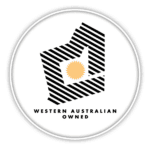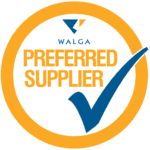Safety signage is important as it provides critical information and guidance to employees, visitors and other individuals in a workplace or public space.
Safety signs located within Perth help to prevent accidents, injuries and illnesses by clearly communicating potential hazards, safety procedures, and emergency information. This can include fire exits, first aid stations, electrical hazards, and other important safety information.
When safety signs are properly designed, manufactured and installed, they are an effective tool for improving safety and minimising liability for employers and property owners.
Additionally, compliance with relevant regulations and standards, such as the AS1319 standard for safety signs, is crucial in ensuring that the signs meet the mandatory safety requirements and provide the necessary protection for individuals in the workplace or public space.
As an expert in Perth safety signage, Corsign takes its responsibility and role in this field extremely seriously and as a result has composed the following guide to ensure that your safety signs are effective.
- Visibility: The signs must be clearly visible and easily noticeable by those who are intended to see them.
- Design: The design of the sign should be simple and easy to understand, using symbols and colours that are universally recognised.
- Placement: The sign should be placed in an appropriate location where it can be easily seen and the information it conveys is relevant.
- Consistency: The use of safety signs should be consistent throughout an organization or facility, ensuring that messages are clear and recognizable to all.
- Relevance: The sign must convey information that is relevant and important to safety in the specific location where it is placed.
- Hire professionals: To manufacture and install the safety signage you require.
By meeting these six key criteria, safety signs can effectively communicate important information to help prevent accidents and protect people’s health and well-being. Allow us to go into a little more detail on each of our points.
1. VISIBILITY
To ensure that safety signs are visible to users, the following factors should be considered:
Location: Safety signs should be placed in prominent and easily accessible locations where they can be easily seen and understood by those who need to see them.
Size and contrast: Safety signs should be of an appropriate size, taking into account the distance from which they will be viewed. They should have high contrast with the background to ensure they are easily noticeable.
Illumination: If the sign is in a location with low light, it should be illuminated so that it is visible even in poor lighting conditions.
Clear and concise language: The language used on safety signs should be clear, concise, and easy to understand, using universally recognised symbols and graphics wherever possible.
Regular maintenance: Safety signs should be regularly checked and maintained to ensure that they remain in good condition, legible, and clearly visible to users.
By following these guidelines, safety signs can be made more visible to users, helping to ensure that the necessary safety information is effectively communicated and that individuals are protected in the workplace or public space.
2. DESIGN
As already mentioned, illumination and clear and concise language are major considerations to take into account when designing effective safety signs. To this end, you should also factor in the following design features and considerations:
High-contrast colours: The colours used on the sign should have high contrast with the background to make the sign easily noticeable and legible.
Appropriate size: The size of the sign should be appropriate for the location, taking into account the distance from which it will be viewed.
Durable materials: The sign should be made from durable materials that are able to withstand the conditions in the workplace or public space where it will be used.
Compliance with regulations: The sign should comply with relevant regulations and standards, such as the AS1319 standard for safety signs in Australia, to ensure that it meets the necessary safety requirements.
By incorporating these design features and characteristics, safety signs can be made more effective in communicating important safety information and protecting individuals in the workplace or public space.
3. PLACEMENT
In Western Australia, road signs must be placed in a manner that is clearly visible to road users as well as not obstructing the view of other road users. The specific placement requirements for road signs are detailed in the Western Australia Road Traffic Code 2000, which specifies the size, colour, reflectivity, and mounting height of road signs based on their type and location. It is important to follow these requirements to ensure the safety of all road users.
4. CONSISTENCY
In Australia, safety signs on building sites and roads are consistent in terms of design, colour and symbol to ensure they are easily recognisable and effective in communicating important safety information.
For example, warning signs are usually yellow with black symbols or text, and mandatory signs are usually blue with white symbols or text. The design of safety signs is standardised according to the Australian Standard AS1319, which provides guidelines for the size, shape and colour of the different types of safety signs. This consistency helps to ensure that all road users and workers can understand the meaning of the signs and take appropriate action to avoid hazards and maintain safety.
For more information on the specific signs needed for construction sites see our recent article here.
5. RELEVANCE
To ensure that safety signs are relevant to those who most need the information, several steps can be taken:
Target audience: Determine the target audience for the sign, such as children or workers. In the case of road safety signage; motorists and pedestrians. The design should then suit their needs and level of understanding.
Language: Use clear and concise language that is easily understood by the target audience. If necessary, use multiple languages to reach a wider audience.
Symbol: Use universally recognised symbols and pictograms that can be easily understood, regardless of language or cultural differences.
Placement: Place the signs in locations where they are easily visible and accessible to the target audience.
Regular review: Regularly review the effectiveness of the signs and make changes if necessary to ensure they remain relevant and up-to-date.
By following these steps, safety signs can be made more relevant to those who need the information and help to prevent accidents and injuries.
6. HIRING PROFESSIONALS
Hiring professionals to design, manufacture and install safety signage in Australia is important for the following reasons:
Compliance with regulations: Professionals are knowledgeable about the relevant regulations and standards in Australia, such as the AS1319 standard for safety signs, which helps ensure that the safety signage meets the necessary safety requirements.
High-quality materials and installation: Professionals use high-quality materials and techniques to manufacture and install the signs, ensuring that they are durable, visible, and easily understood by all.
Expertise and experience: Professionals have the expertise and experience to design effective safety signage that meets the specific needs of a workplace and effectively communicates important safety information.
Liability: Properly designed and installed safety signage helps to minimize liability for employers and property owners in the event of an injury or accident.
STAY SAFE AND REDUCE LIABILITY
In conclusion, effective safety signage is critical for the safety and well-being of individuals in the workplace or public space. Safety signs provide important information and guidance on potential hazards, safety procedures, and emergency information, helping to prevent accidents, injuries, and illnesses. Effective safety signs should be clear, concise, and easily visible, using high-contrast colours, appropriate size, and universally recognized symbols and graphics. Regular maintenance of safety signs is also important to ensure that they remain in good condition, legible, and visible to users. By ensuring that safety signs are effective and properly maintained, employers and property owners can help to minimize liability and create a safer environment for all.
Overall, hiring professionals for safety signage provides peace of mind that the signage will be effective, compliant with regulations, and meet the necessary safety standards. Naturally, at Corsign we believe we offer the best service in this field and would highly recommend contacting us regarding your safety signage needs.
Should you have any questions or concerns regarding safety signage, both design and application, please do not hesitate to get in touch.




